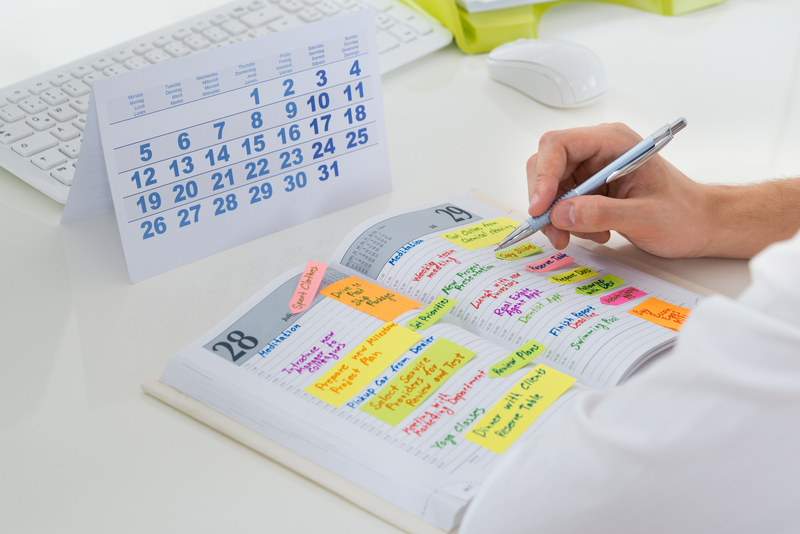Why Precision and Care Matter in Piano Relocation
Posted on 21/06/2025
Why Precision and Care Matter in Piano Relocation
Relocating a piano is a task that demands extraordinary attention, precision, and care. Whether it's a cherished family heirloom or a grand concert instrument, the stakes involved in piano relocation are high. From the intricate inner mechanics to the exquisite finishes on the exterior, every part of a piano requires special handling during a move. In this comprehensive guide, we'll explore why precision and care are essential in piano relocation and what homeowners and movers must consider for a successful, damage-free move.

Understanding the Piano: A Delicate Masterpiece
To fully appreciate the importance of careful piano moving, it's vital to understand the complex and delicate nature of a piano. Pianos are not just heavy; they are intricate machines with more than 12,000 parts, many of which are fragile and sensitive to shocks, vibrations, and temperature changes.
The Complexity Within
- Thousands of Moving Parts: Keys, hammers, strings, and pedals--all delicately balanced for optimal performance.
- Sensitive Materials: Wood, felt, ivory, and metal, each responding differently to pressure and environment.
- Weight Concentration: Grand pianos can weigh up to 1,200 pounds, with the majority of the weight concentrated in one section.
This delicate construction makes precision and care in piano relocation critical not just for functionality, but also for preserving the instrument's value and beauty.
The Risks of Improper Piano Handling
Many assume that piano moving is like any other furniture relocation. Nothing could be further from the truth. The risks associated with improper piano handling can lead to irreparable damage, both externally and internally. Below are some common risks:
Potential Damages During Piano Relocation
- Internal Damage - Like broken strings, damaged hammers, and misalignment in the action mechanism. Such damage can be expensive to repair and may affect the sound quality permanently.
- Structural Damage - Scratches, dents, or cracks in the piano casing and delicate legs can severely impact the instrument's appearance.
- Loss of Tuning - A piano that is jostled or tilted improperly may lose its tuning, requiring a professional tuner's intervention after the move.
- Personal Injury - Without proper technique, moving a heavy piano can cause serious back injuries or even accidents involving crushed fingers or feet.
- Property Damage - Incorrectly maneuvered pianos can damage floors, walls, and staircases, leading to costly repairs in your home or business premises.
Why Precision Is the Key in Every Step
For both local and long-distance piano relocations, precision in preparation, lifting, and transporting is the cornerstone of a successful, damage-free move.
Let's examine the crucial aspects where precision matters most during piano moves:
1. Accurate Assessment and Planning
- Evaluating the Instrument: Each piano type, whether upright, baby grand, or concert grand, demands a distinctive approach. Precise measurements and weight assessments help determine the correct equipment and team size.
- Pathway Mapping: Navigating through narrow hallways, doorways, and stairs requires meticulous planning to avoid bumps, scratches, or sudden jolts.
- Pre-move Preparation: Protecting floors, wrapping the piano with moving blankets, and removing detachable parts (e.g., legs, pedals, music stands) ensure a safe move.
2. The Science of Proper Lifting and Moving
- Balance and Weight Distribution: Specialized equipment like piano boards, dolly carts, and heavy-duty straps are required to keep the instrument balanced and stable.
- Team Coordination: Professional movers use synchronized lifting techniques to prevent tilting, sliding, or toppling, keeping the internal components safe.
- Controlled Movements: Moving slowly, steadily, and with ongoing communication prevents sudden shocks and maintains the integrity of the instrument.
3. Transport and Climate Control
- Piano-Friendly Vehicles: Piano moving companies use vehicles equipped with air ride suspension and climate controls to minimize vibrations and protect against extreme temperatures and humidity.
- Securing the Piano: Proper strapping and padding inside the transport vehicle is essential to keeping the piano immobile and protected from shifting during transit.
- Final Placement: Precision continues at the destination, where gentle unloading and accurate placement prevent further risks.
The Advantages of Using Professional Piano Movers
While some may be tempted to save money with a DIY approach, the risks far outweigh the savings. Professional piano movers possess the expertise, equipment, and insurance coverage to guarantee a safe and seamless relocation. Here's why they stand out:
Specialized Training and Experience
- Handling Expertise: Years of experience allow professionals to anticipate and solve challenges, ensuring the piano's safety at every step.
- Knowledge of Piano Anatomy: Understanding how different parts respond to pressure, temperature, and movement means fewer mistakes and faster solutions if problems arise.
Proper Equipment for Every Situation
- Piano Skids and Dollies: Custom tools designed for heavy, unwieldy pianos make moving manageable and safe.
- Protective Packing Materials: From blankets and padding to shrink wrap and strapping, professional movers use only the best materials to shield every inch of the instrument.
Insurance and Peace of Mind
- Liability Coverage: Professional piano relocation companies are insured, offering peace of mind in the rare case of accidental damage.
- Value Preservation: Trusted movers understand that a piano's value isn't just monetary--it's also sentimental and historical.
Long-Term Effects of Careless Piano Moves
Even if there's no immediate, visible damage, mishandling during relocation can cause subtle, long-term issues with your piano. Over time, these problems can manifest as:
- Changes in Tone: Disturbed strings and misaligned hammers may create muffled or tinny sounds.
- Structural Weakening: Small cracks in the frame or soundboard can expand, especially with repeated improper moves.
- Recurrent Tuning Problems: If the piano's harp or pin block is damaged, staying in tune becomes difficult, diminishing the playing experience.
- Decreased Value: Collectors and musicians alike value well-maintained instruments--visible scratches and dents lower resale or insurance value.
Preparing Your Piano for Relocation: Best Practices
Whether hiring professionals or preparing your own piano for a short move, certain best practices will go a long way in protecting your instrument:
- Climate Preparation: Avoid moving in extreme weather when possible, and let the piano acclimate to new environments to prevent wood warping or finish cracking.
- Secure Loose Parts: Lock or immobilize the lid and keyboard cover. Remove all castors, pedals, and music stands where possible.
- Use Quality Moving Blankets: Cover the piano thoroughly to protect polished wood, keys, and vulnerable edges.
- Mark the Path: Clear all obstacles from the moving route, including rugs, furniture, or clutter that could trip movers or cause bumps.
- Communicate Clearly: If you're working with a moving team, ensure everyone understands their roles and the plan for each phase of the move.
Why Precision Matters in Upright vs. Grand Piano Relocation
Not all pianos are moved the same way. Upright pianos have a different center of gravity from grand pianos, and each demands unique handling. For instance:
- Grand Pianos: Usually, the legs and pedal lyre are removed and the body is placed sideways on a padded board for safe transport. This step must be completed delicately to avoid cracking the rim or damaging the soundboard.
- Upright Pianos: Taller and narrower, they require secure strapping and support, especially to protect the castors and key mechanisms from pressure shocks during tilting and lifting.
- Digital or Electric Pianos: While lighter, they are still susceptible to damage from jarring movements or moisture exposure, and delicate electronics need moisture-proof, antistatic packing.
The Role of Communication and Teamwork in Safe Piano Moves
Even with the best equipment and training, piano moving is a team effort. Clear, ongoing communication ensures that every member lifts, turns, and transports in perfect harmony, mirroring the teamwork required to play a beautiful piece of music.
- Constant Coordination: Calling out movements ("step," "lift," "turn") ensures everyone reacts simultaneously, avoiding lurches that could jar the piano.
- Flexibility: If an unexpected obstacle arises, a well-coordinated team can adjust smoothly without dropping or damaging the instrument.

Piano Relocation FAQ: Your Top Concerns, Answered
How much does it cost to move a piano professionally?
Costs vary by piano size, move distance, staircases involved, and local rates. On average, piano relocation services can range from $150 for local upright moves to $1,000+ for large grand pianos moved long distances. Requesting a quote from a specialist is the best way to budget accurately.
Do all pianos need to be retuned after moving?
Most pianos require retuning after relocation, especially if moved a significant distance or to a different climate. Allow the piano time (at least 2-3 weeks) to acclimate before calling a tuner.
Can I move my piano myself?
While small electric pianos may be moved safely with careful handling, acoustic uprights and grands should always be moved by professionals to avoid personal injury and damage to the instrument.
Conclusion: Investing in Precision and Care Protects Your Piano's Legacy
Pianos are more than just musical instruments; they are works of art, pieces of history, and cherished family treasures. Precision and care in piano relocation are absolutely essential to preserve the musical power, beauty, and value of your investment. Whether you own an antique upright, a baby grand, or a massive concert piano, entrusting your piano move to skilled professionals who understand the unique demands of piano moving is the best decision you can make.
If you're planning a move, don't leave your piano's fate to chance. Contact a reputable piano relocation specialist and experience the difference that true precision and care can make. After all, your piano's legacy--and its beautiful music--deserves nothing less.



